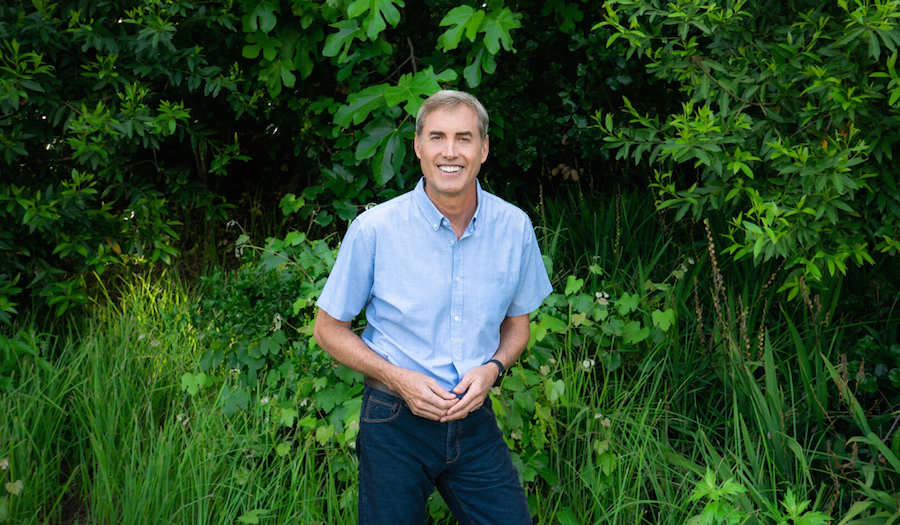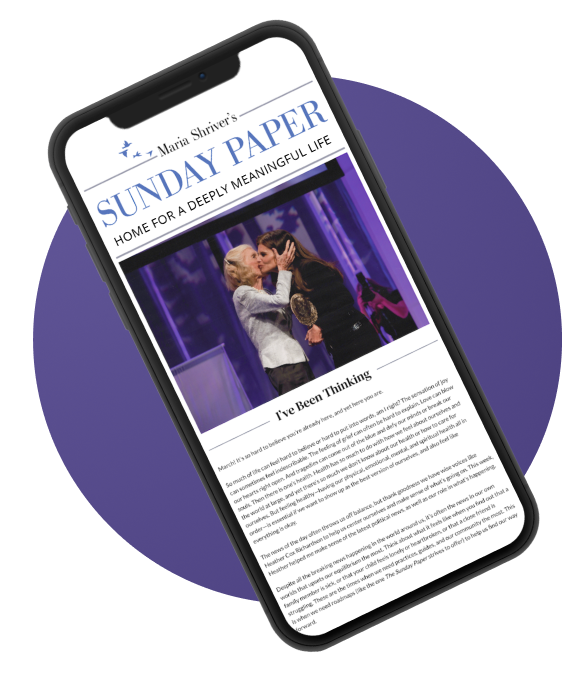Stanford Researcher BJ Fogg on the ‘Tiny Habits’ That Lead to Big Breakthroughs

When it comes to change, behavior scientist BJ Fogg believes that “tiny is mighty.” In his new book, Tiny Habits: The Small Changes That Change Everything, Fogg brings his experience coaching more than 40,000 people to lose weight, de-stress, sleep better, or achieve any goal of their choice. You just need Fogg’s behavior formula: make it easy, make it fit your life, and make it rewarding.
1. Your book is all about the “small steps, staying the course” to reach your bigger goals. Why do we need to start “tiny?"
In the book Tiny Habits, I give some specific reasons that I won’t specifically detail those here. Let me give you some new insights that overlap a bit with what I share in the book:
*When you go tiny and make the change really small, then you don’t have to rely on having high levels of motivation. The reason that matters is that our motivation goes up and down over time. It’s almost impossible to sustain high levels of motivation. When you go tiny, you don’t need to do that and that means you can succeed. You’re not dependent on sustaining your motivation. In contrast if you go big (e.g. write for an hour a day, run multiple miles, etc.) you find these big leaps require lots of motivation. The truth of the matter is there is no realistic way to sustain the motivation unless you’re required to (Bootcamp in the Army is different than Bootcamp at your local gym). That’s what Tiny Habits is about: be realistic.
*The way habits work is this: they wire in when you feel successful. When you go tiny, when you set the bar really low, you are much more likely to succeed. You can form the habit faster because you’re setting yourself up to feel successful and that’s the feeling that wires in the habit.
*When something seems easy to do, we don’t procrastinate as much as when something seems big. When it’s simple and tiny, people are much less likely to procrastinate.
*You can dive in anytime and get started. You don’t have to wait until some specific time, whether it be Monday or the beginning of a new month or so on.
*You don’t feel bad about procrastinating. Whew!
2. Your background is in behavior design. What is that? How did you devise your Fogg Behavior Model?
Behavior Design is what my lab members at Stanford and I decided to call this new territory we began studying and exploring in 2010.
When we discovered the 15 ways behavior can change, and I developed the Fogg Behavior Grid (think the periodic table of elements for behavior). Then, the members of the lab wanted to write guides for each of those 15 approaches, including starting, stopping, doing a behavior one time, and so on. In writing these guides over the course of the year, we realized that we’d pivoted away from persuasive technology and started exploring this new field that we decided to call Behavior Design.
Behavior Design is a set of new models (ways of thinking) and new methods (ways of designing). It’s not a summary of old research. It’s brand new, original research, and I think it’s the future of behavior change.
The cornerstone model is the Fogg Behavior Model. It states that behavior happens when three things come together at the same moment. There’s Motivation to do the behavior, Ability to do the behavior, and a Prompt.
To stop a behavior, you remove one of those elements. If you want a behavior to happen, you make sure they are all there.
The Behavior Model is a breakthrough way of looking at behavior.
It happened in multiple steps and over the course of a few years. I saw that motivation and ability were key components (perhaps because I’ve been obsessed with simplicity since the nineties). Then, in 2002 I started mapping out simplicity and the important role of that.
Next, I got the insight that there’s another dimension here and it’s motivation. I saw that motivation and ability exist on these two axes.
The final piece is the Prompt (what I used to call Trigger). In preparation for a new talk in Europe, where I spoke about how to “put hot triggers in the path of motivated people.” Now, I’ve changed the word Trigger to Prompt. (The word trigger has a more negative meaning and prompt is a cleaner, more clear word.)
In 2007, I developed the Fogg Behavior Model and 2009 is my academic publication around it where I share that this model that applies to all behaviors, all cultures, all ages and explain how to use the model. The individual components differ (by age, by culture; what motivates a teenager is different than someone in their nineties) but the model is universal.
3. Your key message in the book is you make changes by “feeling good” not feeling bad. What does that mean? Can you share some examples?
What I say in Tiny Habits is this: “You change best by feeling good, not by feeling bad.”
You can change through feeling positive emotions. By embracing or creating these positive emotions as you do the behavior, that’s what wires in the habit. You don’t use guilt, shame, or fear to wire in a habit; you use feelings of success. I specifically focus people on feelings of success, the emotion that wires the habit into our brain.
Feelings of success not only wires in new habits…
- It leads to ripple effects.
- You create other habits naturally.
- This uplift, this positive emotion that you feel, then causes you to see the world differently, you treat people differently, and so on.
Imagine someone feeling uplifted going into a business meeting vs. someone feeling guilt/shame/fear.
The assumption that you have to feel guilty/bad is the wrong approach. You can do it through positive emotions.
Yes, it works on creating habits but it also works in a more general way to ripple out into other aspects of your life. (Hence… the subtitle of my book: The Small Changes that Change Everything)
It’s not that you have 200 small habits; it’s that you embrace the positive emotions and feel them more readily, and that starts moving out the negative emotions to help you change in the best way.
The deeper aspect of this concept is this:
Yeah, you can guilt your kid into doing something. But is that the best way? No it’s not, because it’s not uplifting for your kid.
You can make yourself feel bad in order to do a behavior but is that the best way?
4. Can anyone practice this method?
Yes, anyone can use the Tiny Habits method. My partner is 76, he uses it. My friend here in Maui is 91 and she loves this method.
If you can follow simple, straightforward directions; you don’t need to worry about a cultural or age barrier.
We’re tapping into how the brain works.
Fundamentally our brains work in mostly the same ways: how we create cause and effect relationships, how we perceive the world, how we perceive emotions, etc. Yes, there are a lot of subtleties, but we have way more similarities than differences. Frankly, we are mostly wired the same and motivated by the same deeper drives.
5. What do you hope readers will learn from reading your book?
I hope they learn that:
There are so many things about behavior change that you have heard or read about that you should set aside (or forget). Those are the old ways that don’t work very well.
Instead, there’s a radically new way, a whole new perspective on how to: select which behaviors/new habits you want; how to design them into your life; and how to be iterative.
In Tiny Habits, the mindset is “practice & revise,” it’s not perfection. You set the bar low (just two pushups, just one breath) and you keep it low. Even though you can do more, that’s extra credit. You always keep it low so you can always succeed.
It works and it’s way easier than you think.
You do that by feeling good, not bad. You can transform your life by picking the right tiny changes, and I give the step by step method. These tiny tweaks can lead to transformation.
This book is about hope: as you put these methods into practice, you see that there is a new way. Instead of that old mindset, you feel empowered, and you see the transformation. The hope to dive in and learn it, the hope from experiencing how quickly and naturally you can change. Pick what you want, make it really easy, dive in and celebrate your successes. It’s a design process, not a willpower challenge.
Finally, taking off my researcher hat, I believe that as people gain more hope, we’ll be less susceptible to the crazy fear, threats, and bullying that going on at the highest levels on this planet. That will open us up to discussion, change, and dialogue with people who think differently. The fact that we’re so polarized is a function of fear. With hope, I think that opens us up. I think now more than ever is the time for Tiny Habits and these things to come to the world.
Click here to purchase “Tiny Habits: The Small Changes That Change Everything.”
This Q&A was featured in the February 16th edition of The Sunday Paper. The Sunday Paper inspires hearts and minds to rise above the noise. To get The Sunday Paper delivered to your inbox each Sunday morning for free, click here to subscribe.

